 |
 |
 |
| |
Doxycycline PEP: High uptake and significant decline in STIs after clinical implementation
|
| |
| |
Wide Uptake of DoxyPEP in SF Group, Fast Drop in STI Incidence
CROI 2024 (Conference on Retroviruses and Opportunistic Infections), March 3-6, 2024, Denver
Mark Mascolini
Doxycycline postexposure prophylaxis (DoxyPEP) cut sexually transmitted infection (STI) incidence 60% or more in a 3000-person San Francisco study of men, women, and nonbinary people [1]. Uptake was highest in transgender women, nonbinary people, and cisgender men.
Hyman Scott and colleagues at the San Francisco Department of Public Health and coworkers at other centers noted that rates of STIs (especially syphilis) continue to climb in the United States (especially in men who have sex with men, MSM). Studies of MSM and transgender women show that doxycycline taken after exposure to sexually transmitted chlamydia, syphilis, or gonorrhea cut incidence of these STIs by 50% to 70%. But a single study of DoxyPEP in cisgender women found no benefit with DoxyPEP versus standard care [2]. US national guidelines recommending DoxyPEP were in the works at the time of Scott's presentation at CROI 2024.
The San Francisco Department of Public Health recommended DoxyPEP for at-risk people in October 2022. An STI clinic in San Francisco that sees more than 8000 people for sexual health services began offering DoxyPEP in November 2022. When rolling out DoxyPEP, the clinic planned to evaluate STI incidence trends with this postexposure strategy. The clinic considers recommending DoxyPEP for gay, bisexual, or heterosexual men, as well as for transgender and gender-nonconforming people, while use in cisgender women remains under study.
The clinic explains how DoxyPEP works in plain language: "By taking two pills (100 mg each) of the antibiotic doxycycline ("Doxy") within 24 to 72 hours of fucking or sucking as the top, bottom, or both, you can stop the spread of STIs. One dose of Doxy PEP will cover all the sex you'll have in a day . . . Don't take more than two pills (one dose) in a 24-hour period."
This analysis included all active San Francisco AIDS Foundation HIV preexposure prophylaxis (PrEP) clients from June 2022 through September 2023, all of whom were offered DoxyPEP at routine visits starting on November 30, 2022. Researchers assessed two cohorts-the DoxyPEP cohort, who started PEP any time after November 30, 2022, and the non-DoxyPEP cohort, who never started the preventive strategy during the study period. Analysis yielded (1) incidence rate ratios (IRR) comparing the pre-DoxyPEP period (June 2022 through November 2023) and the post-DoxyPEP period (30 days after starting DoxyPEP), and (2) a controlled interrupted time series [3] using mixed effects Poisson regression.
Among 3081 total PrEP clients, 1209 (39%) started DoxyPEP, including 37% of 509 Asians, 37% of 126 blacks, 43% of 723 Hispanic people, 41% of 408 multiracial people, and 37% of 1095 whites. Overall, 45% declined DoxyPEP or had an unknown DoxyPEP uptake status. Uptake rates did not vary much by age, ranging from 34% to 43% in 5 age groups under 60 and falling slightly to 27% in people 60 or older. All 14 cisgender women offered DoxyPEP declined, while 25% of 32 transgender men, 39% of 2763 cisgender men, 42% of 77 transgender women, and 44% of 188 nonbinary people opted to try DoxyPEP.
Incidence of any STI (chlamydia, syphilis, or gonorrhea at any site) fell about 60% in the pre-post analysis (IRR 0.42, 95% confidence interval [CI] 0.24 to 0.74, P = 0.003), while incidence of syphilis plunged almost 80% (IRR 0.22, 95% CI 0.09 to 0.54, P = 0.001) and incidence of chlamydia waned almost 70% (IRR 0.33, 95% CI 0.23 to 0.46, P < 0.001). Gonorrhea incidence slipped about 10%, a nonsignificant change (IRR 0.89, 95% CI 0.69 to 1.15, P = 0.383). But gonorrhea incidence did appear to be falling over time with DoxyPEP in the interrupted time series analysis.
For any STI, interrupted time series analysis showed a one-third decline for post- versus pre-DoxyPEP (0.67, 95% CI 0.46 to 0.96, P = 0.03). Interrupted time series also confirmed significant ebbs in incidence of chlamydia (P = 0.021) and gonorrhea (P = 0.003).
Scott and coworkers believe their findings reflect "strong demand [for DoxyPEP] among potential users." Uptake proved highest among people with STIs, cisgender men, and transgender women. STI incidence fell swiftly after DoxyPEP began, a finding "demonstrating high impact of this intervention in a real-world setting."
References
1. Scott H, Roman J, Spinelli MA, et al. Doxycycline PEP: High uptake and significant decline in STIs after clinical implementation. CROI 2024 (Conference on Retroviruses and Opportunistic Infections), March 3-6, 2024, Denver. Abstract 126.
2. Stewart J, Oware K, Donnell D, et al. Doxycycline prophylaxis to prevent sexually transmitted infections in women. N Engl J Med. 2023;389:2331-2340. DOI: 10.1056/NEJMoa2304007. https://www.nejm.org/doi/10.1056/NEJMoa2304007
3. English P. Package 'its.analysis.' cran.r-project.org. October 13, 2022. https://cran.r-project.org/web/packages/its.analysis/its.analysis.pdf
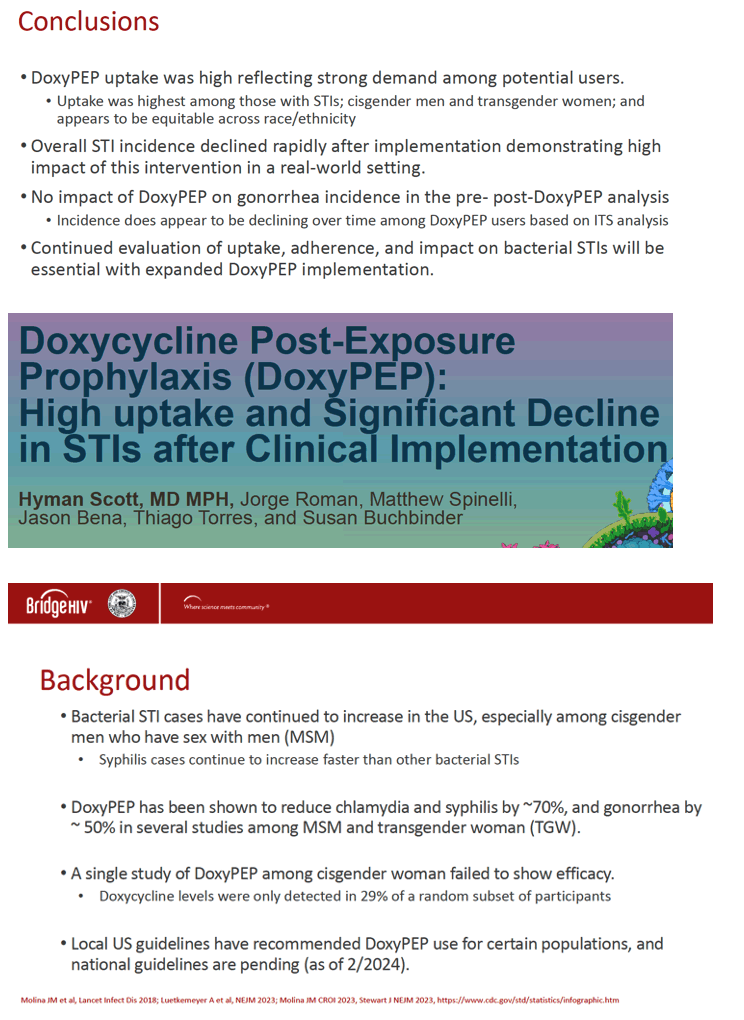
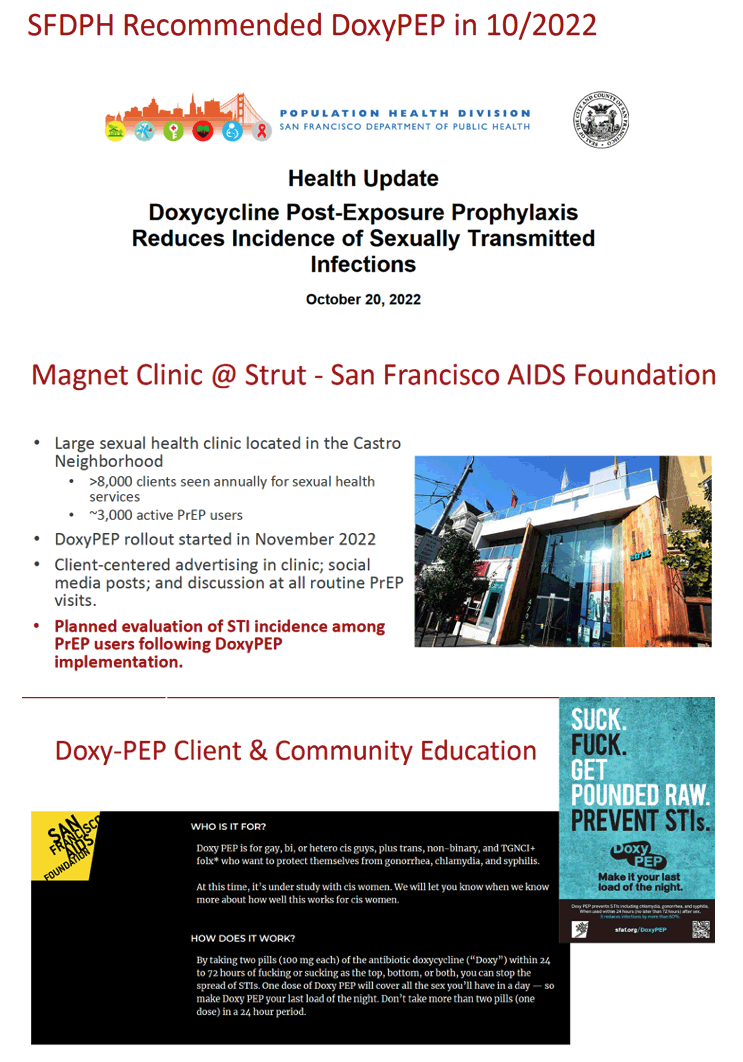
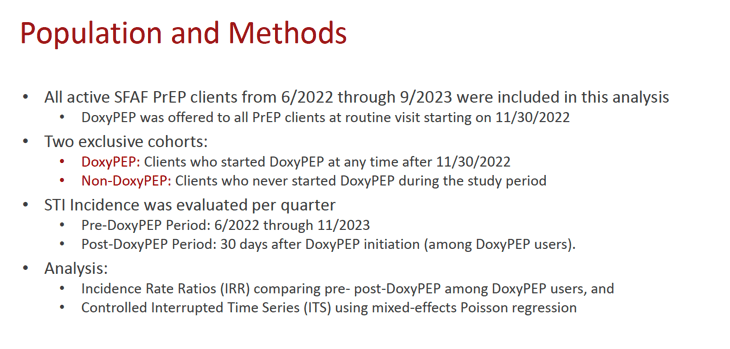
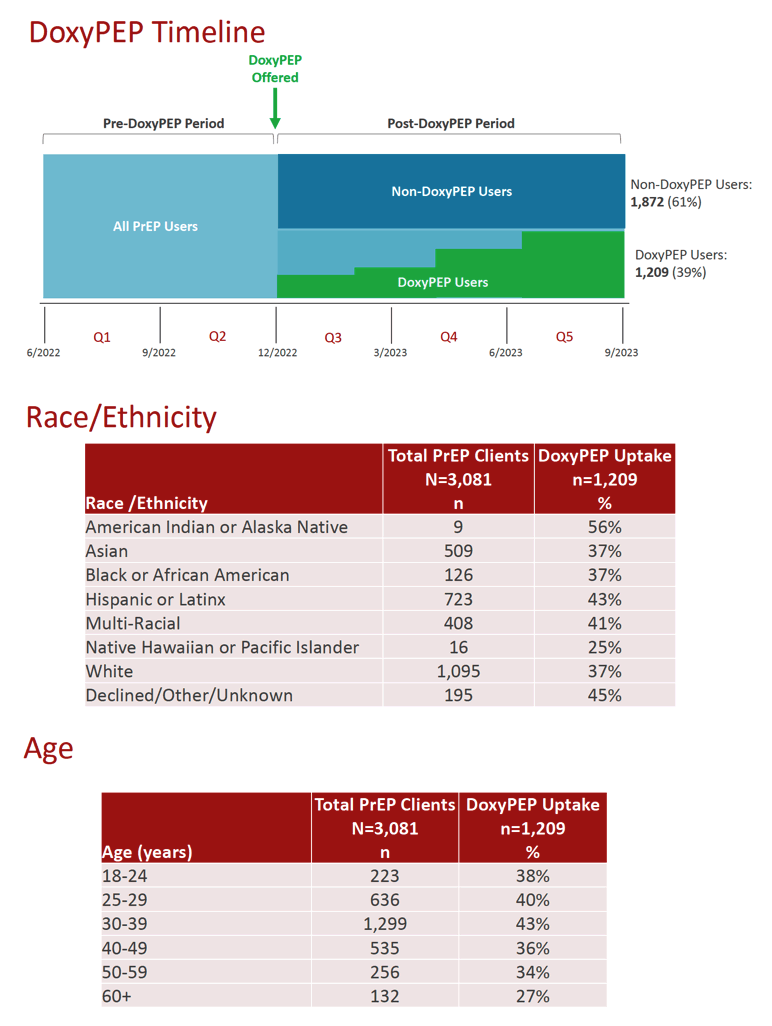
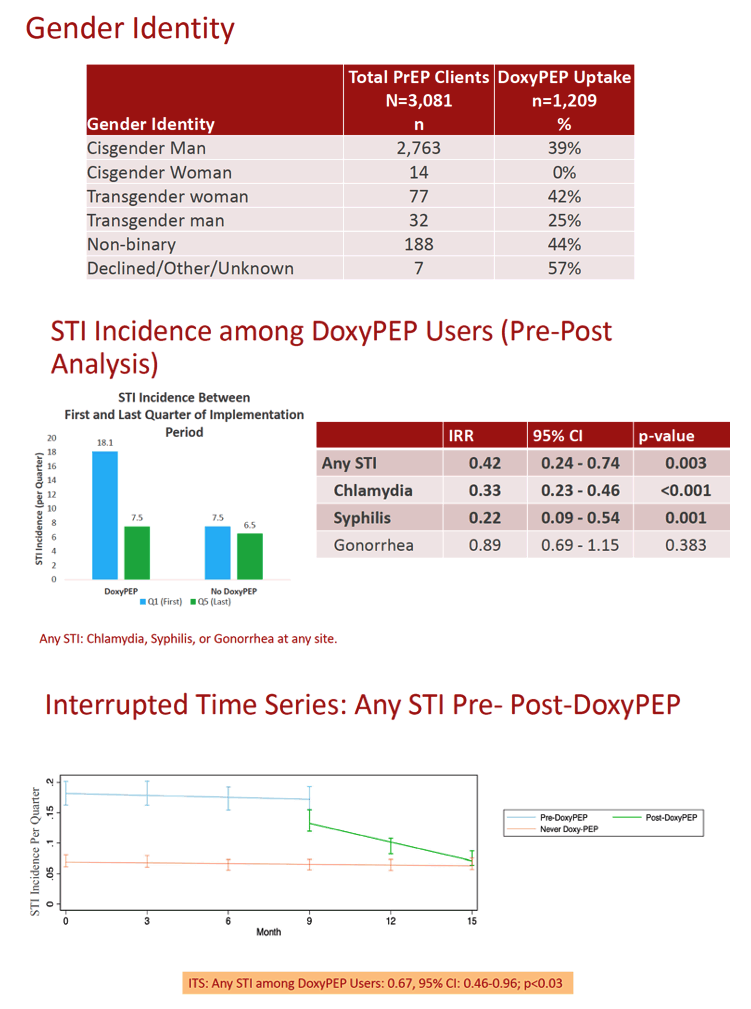
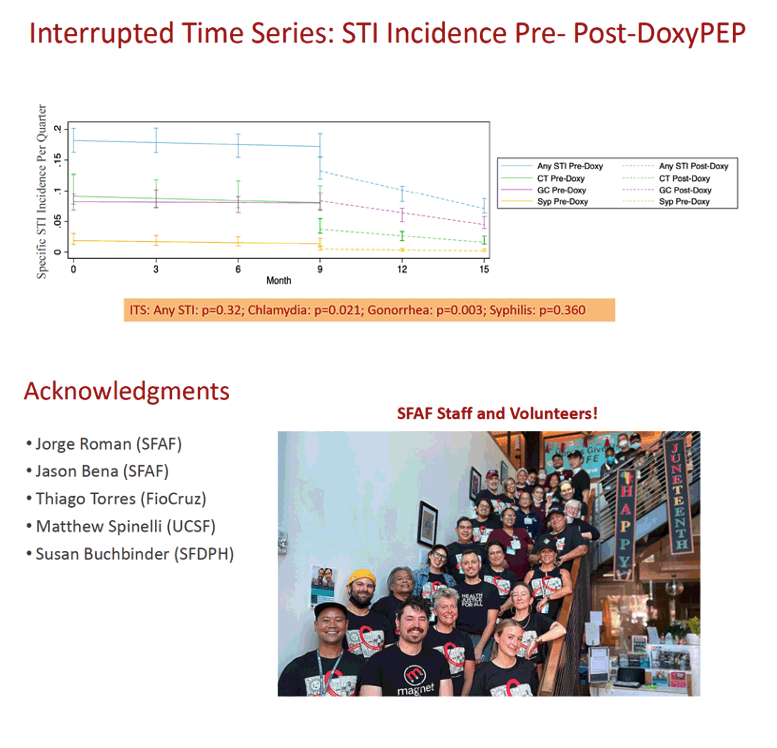
|
| |
|
 |
 |
|
|